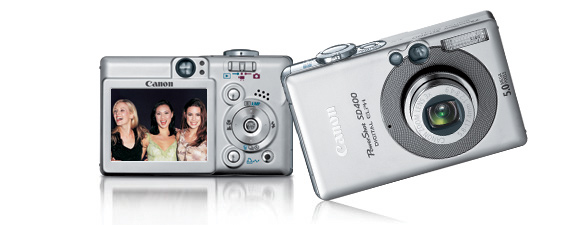(for software & services, see this page. Stuff I'm just messin' with is here.)
Last updated February 12, 2008
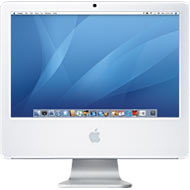
In January, 2007, I upgraded the center of my computing world to Apple's mega-massive 24" iMac running a 2.16 GHz Intel Core 2 Duo processor. With a corporate discount, I managed to upgrade a few items, including opting for 2 GB of memory, a 500 GB hard drive and an Nvidia Geforce 7600 GT video card with 256 MB of memory. I also got the wireless Bluetooth keyboard and mighty mouse. At the end of 2007, I upped the RAM to the 3 GB max for OS X Leopard and we're happily running version 10.5.2.
I'll warn anyone considering this system that the combination of built in iSight camera and Photobooth software is the biggest time waster since Microsoft put Solitaire in Windows. It's a speedy set-up for sure but physically imposing. I had to work hard to adjust my desk and chair set-up to get an ergonomic sightline on the giant monitor thanks to the four inches of white plastic under the screen. Otherwise, it's great. I posted a blog review of the iMac on Feb. 16, 2007. I blogged about upgrading to Leopard on December 7, 2007.
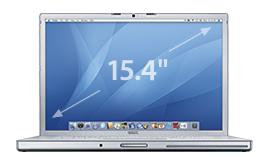
In June, 2007, my three-year-old G4 Powerbook started making funny noises so it was time to move on, especially with the third revision of Apple's Intel-based MacBook Pro's available. I went for the bottom of the line 15" model running an Intel Santa Rosa Core 2 Duo chip at 2.2 GHz. I upped the RAM to 4 gigs myself but used the good folks at TechRestore to up the hard drive to 250 GB. Overall, it's a speedy machine and the screen is of the newer, brighter and more environmentally friendly LED variety. While I'm generally quite pleased, the build quality seems a little lower than I'd like. I hope this baby can stand up to the wear and tear of me. I'm keeping it safe in a "Considerable Embarrassment" bag from, who else, Crumpler Bags.

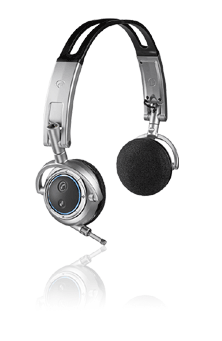
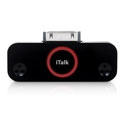
Also in the category of "you'll have to pry it out of my cold, dead fingers" is the 60-gig iPod with video my wife got me in November 2005 after my 3G iPod bit the dust. In addition to music, I've bought far too much video. Tiring of the ubiquitous white ear buds, I got a pair of Pulsar's Bluetooth stereo head phones (hint- Amazon has them for half of list price). No cords and the headphones are also paired with my mobile phone so when a call comes in, the audio switches to the phone and the built-in mic turns on. It's a sweet set up. Only a year after the iPod arrived, I finally found a good option for recording voice memos and interviews, Griffin Technology's iTalk Pro which I reviewed on my blog on Dec. 12, 2006.
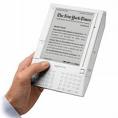
I'm an unabashed fan of Amazon's electronic book reader, the Kindle. It works great and the convenience and weight savings versus reading a heavy hardcover can't be beat. I've blogged about it incessently, for example on November 24, November 25 and November 29, 2007.
We've had several Canon digital cameras in our house over the past few years and they can't be beat. Canon has a proprietary picture processing chip inside each one that delivers the truest and richest colors I've seen. We use an SD400, a 5-megapixel camera in the Digital Elph line, when portability is paramount. It's tiny, goes anywhere and has enough features to deal with almost any situation. For a June 2006 business trip to Alaska, I decided that it was time to invest in a digital SLR model, so I bought Canon's Digital Rebel XT. It's able to save images in the RAW format. Even more important is the speed. It has no start up lag, no shutter lag and is able to leap tall buildings -- I mean -- able to shoot a bunch of pictures in a row. RAW pictures take up huge amounts of space and I've been happy with a generic-looking, 4-gig compact flash card purchased from Newegg. I keep the big Rebel XT in a delightful red bag called "The $3 million home" from Crumpler Bags. Now, if only both cameras came with the same size battery charger. Nope. I blogged briefly about the cameras on July 8, 2006.
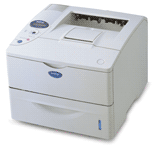
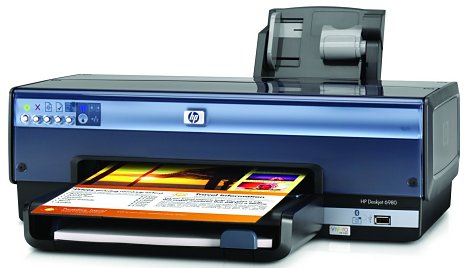
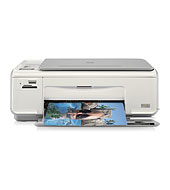
My primary printer at home is a monochrome laser Brother HL-6050DW, since replaced by the HL-5280DW. This baby is large and in charge and I love it. It has a wifi networking card, a parallel port and a USB port and all three can be active at once. Print quality is fabulous at 1200x1200 dots per inch and it does automatic two-sided (or duplex) printing, saving a ton of trees. For color print jobs, we have HP's 6980, a speedy little devil that includes ethernet and wifi connections at half the price of a good USB-only inkjet a year ago. In June, 2007, with my MacBook Pro purchase, I received a free HP all-in-one c4200 printer that scans and copies in addition to printing - useful.
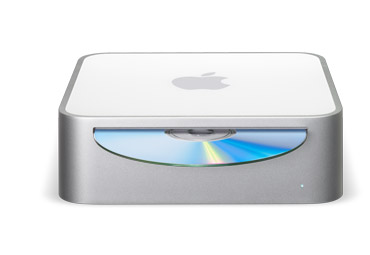


Also hanging around is my original issue, bottom of the line 1.25 GHz PowerPC G4 Mac mini, with upgraded RAM, wifi and Bluetooth. This has always been a staggeringly elegant and wonderful machine, especially when attached to a 20" Dell LCD through the mini's DVI port. It can't run Civilization but otherwise comes in handy as a testbed for software updates like OS X 10.5 Leopard. One downside, corrected on more recent mini models, is the lack of ports -- just 2 USB ports and one firewire. I eliminated the shortage with a Belkin Hi-Speed USB and Firewire Hub. It's made to match the mini and adds 4 USB and 2 firewire ports. A short blog review of the mini from March 7, 2005.
The monitor was bought during one of Dell's periodic super sales. It has both DVI and analog VGA ports so I can connect to the mini via DVI and another PC via VGA and switch the video source instantaneously with the push of a button.The monitor also has connections for S-video and television and a handy USB hub.
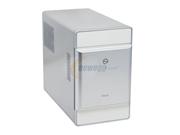
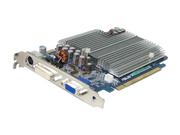
Windows PCs don't have much of a shelf life 'round these parts anymore. In April, 2007, my mom's Windows 98 PC had to be replaced to run the latest version of TurboTax. So the Windows 2000 box we built in September, 2006, based on Shuttle's SB86i and an Intel Celeron D chip, left the building. In its place, I used a cheaper Asus Athlon X2-capable all-in-one going by the clever moniker of T3-M2NC51PV. I loaded it up with spare parts and a copy of Windows Vista ("Home Premium") grabbed at CompUSA's store closing sale for 70% off. Inside, we have an AMD Athlon 64 X2 3600+ Brisbane running at 1.9GHz and an Asus EN7600GS video card that's fanless to keep things quiet. I blogged about the all-in-one on May 22, 2007, after trying to justify using Windows Vista on April 18.

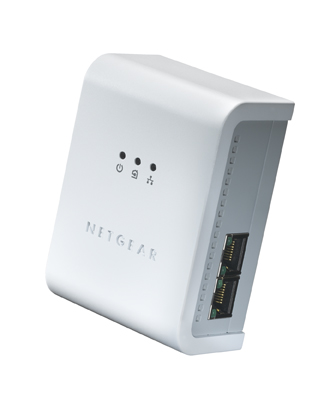

The household network got a major overhaul in October, 2007, when we switched to Verizon's FIOS service. Verizon installed a wireless router of their own choosing, the Actiontec MI424WR. It's nothing great but meets our needs. That meant it was curtains for the last of our Linksys gear. The Actiontec works fine with our Netgear gigabit switch and a handful of Netgear's nifty 200-megabit-per-second, ethernet over home wiring HDX101 Powerline adapters. I blogged about the incredible speed of FIOS on October 17, 2007, and the Powerline stuff versus wifi on August 17, 2007. Since both new Macs are 802.11n-capable, I added an original-version Airport Extreme base station from Apple running in the 5 GHz band.
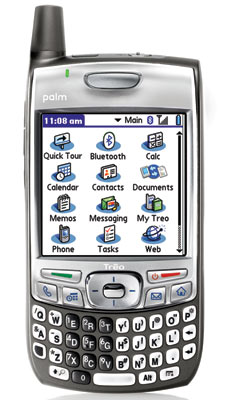
Work mandated that I use a bulky Treo 700p running the Palm operating system over Verizon's voice and data networks, even if I dream of Apple's iPhone nightly. The Treo's phone and contact integration are fine and it can run a zillion applications like any other Palm, but darn slowly. Battery life is very poor -- plan on recharging every night. The Treo replaced a horrid Motorola e815 in December 2006 that had itself replaced a great in its day Sony Ericsson T616 in August 2005. For more information about the limitations of the e815, see my blog reviews on August 24 and September 7, 2005.

In 2005, I upgraded the home office phones to the wonderful Uniden TRU8866 system. It's a cordless phone operating in the 5.8 GHz band, so it doesn't interfere with wifi and isn't affected by the microwave oven. It handles two lines, has many typical bells & whistles like caller ID and a 100-number programmable memory. The base unit has one portable handset and a speaker phone but no corded handset. I've since added two more stand-alone handsets that can also be used as intercoms or room monitors. The handsets also function as excellent speaker phones. And they look good, too.
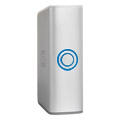
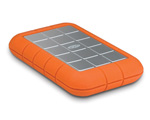

Maybe it's true that you can't be too thin or too rich -- I doubt it -- but you definitely cannot back up your hard drive too often or in too many different ways. I've been burning DVDs and mailing them to my brother, uploading to .Mac and Mozy, emailing to gmail and, of course, using external hard drives. In October, 2007, prepping for the new Time Machine feature in Mac OS X 10.5, I got a great deal on a pair of 500 GB Western Digital MyBook Pro drives with fast Firewire 800 ports. An older LaCie 160 GB d2 model is hooked up to the Airport Extreme for network sharing. In January, 2007, I got a rugged and brightly colored LaCie All-Terrain 120 GB model with USB and Firewire ports for traveling, upgrading to the 250 GB model in January, 2008.

When I wanted mobile broadband for my Powerbook G4 in April, 2005, the best local choice was Verizon but when my contract expired two years later, Sprint was the better deal. But did I want to get another PC card modem? The latest Macbook Pro notebooks from Apple only had Expresscard slots and Macbooks had no slots at all. Amazingly, I was able to have my cake and eat it too! Sprint sells a mobile broadband modem in the form of a USB dongle. The Novatel Ovation U720. It's ugly but works great. Download speeds are very good and upload speeds actually beat my old cable modem. Verizon got back in our good graces with their FIOS home Internet service. I blogged about the Sprint modem on March 20 and March 27, 2007.
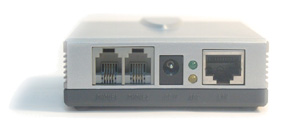
We used to pay Verizon some exorbitant sum for a second phone line. When I stopped working at home full-time, it wasn’t deductible -- or justifiable -- anymore. I did test some voice-over-IP services and decided to add a line from the Gizmo Project. I connected the line to our regular telephones using an amazing little box from Sipura (also a Cisco company). The tiny silver contraption plugs into our router with an Ethernet cable and into our phones with an ordinary phone cable. Setting it up right was a bit of a beast but now we have two dial tones, one that costs about $50 a month and one that cost $35 A YEAR. Quality on the Gizmo line isn’t perfect, but it’s an amazing bargain none the less. Also see my Gizmo service write-up.
